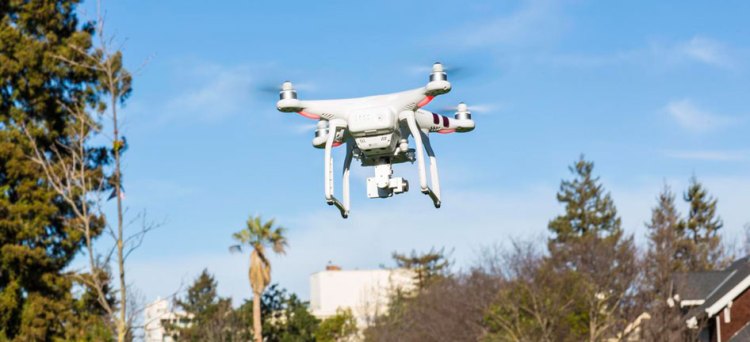BARCELONA, Spain — U.S. telecom giant AT&T is partnering with chip maker Intel to test and optimize how drones perform on LTE connections beyond line of sight, at higher altitudes, or when faced with external interference.
Intel is demoing an LTE-connected drone at Mobile World Congress (MWC) in Barcelona this week. The partnership is designed to show how a network that has primarily been designed to connect devices (such as smartphones) on the ground can be reappropriated for unmanned aerial vehicles (UAVs).
Many drones can be connected by smartphones, with onboard cameras giving the operator a real-time view of the UAV in flight. That, in conjunction with other sensors required to control the drone, means that a constant connection is required. And this is why Intel is teaming up with AT&T’s Internet of Things (IoT) team and its Foundry innovation center to see how drones can best work on an LTE network.
Drones have exploded in popularity in recent years, leading to increasing concerns over security and questions about how the vehicles could or should be regulated. And this is one of the areas the two companies are looking to address, including examining how signals between a smartphone and a drone may interfere with airplanes and other manned aircraft. They’ll also explore usability and functionality in “beyond line-of-sight” situations, a scenario the Federal Aviation Administration (FAA) is currently considering.
It’s worth noting here that the partnership is less about helping consumers navigate their toys around public thoroughfares than it is about exploring legitimate business scenarios. While the likes of Amazon are currently looking into “delivery by drone” initiatives, there are also many other use-cases across numerous industries that could see UAVs taken to the next level.
“AT&T and Intel will be testing how the network can enable the most exciting business use cases for drones,” said Chris Penrose, senior vice president of IoT Solutions at AT&T, in a press release. “Our LTE network is uniquely positioned to connect industries like delivery, agriculture, construction and insurance. We’re using the network to transfer important information, images and video quickly and efficiently — far beyond the boundaries of short-range connectivity.”
For AT&T, the move makes sense as the broader telecom industry increasingly embraces the so-called Internet of Things. As for Intel, it has been pushing heavily into the drone realm of late — recently acquiring Ascending Technologies, a drone maker that specializes in collision-avoidance technology.
“Intel believes UAVs have great potential, from inspections, precision agriculture to deliveries of consumer goods and providing emergency disaster relief,” added Anil Nanduri, vice president of the New Technology Group at Intel. “We want to grow this market through our collaborations and by integrating new technologies and compute to UAVs.”
VentureBeat's mission is to be a digital town square for technical decision-makers to gain knowledge about transformative enterprise technology and transact. Learn More


